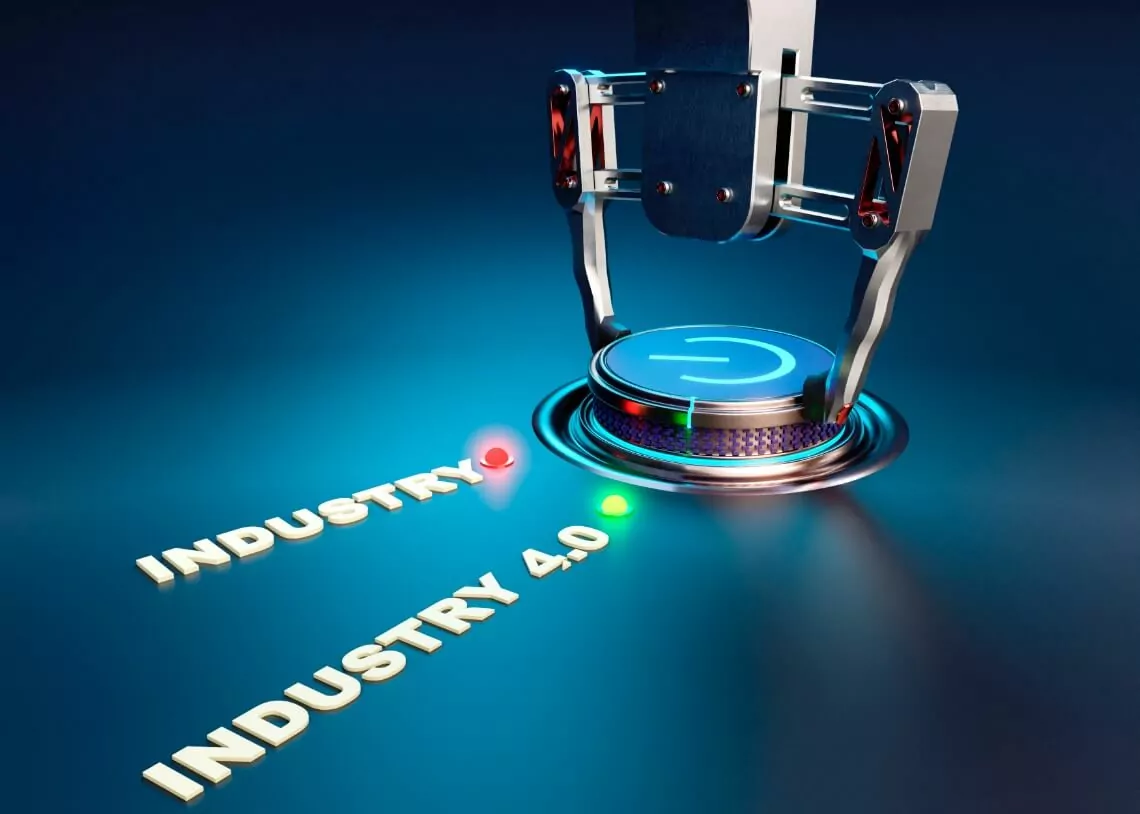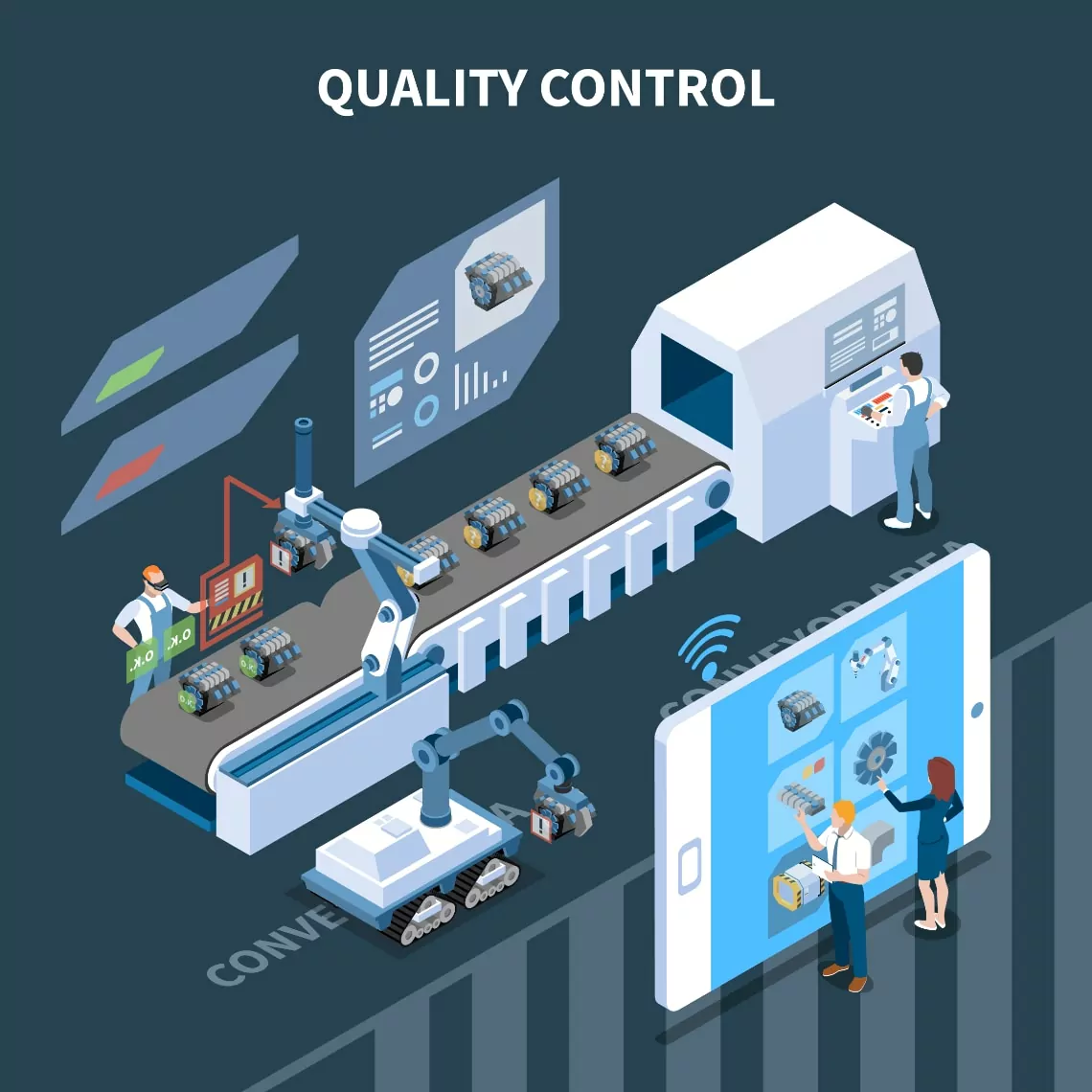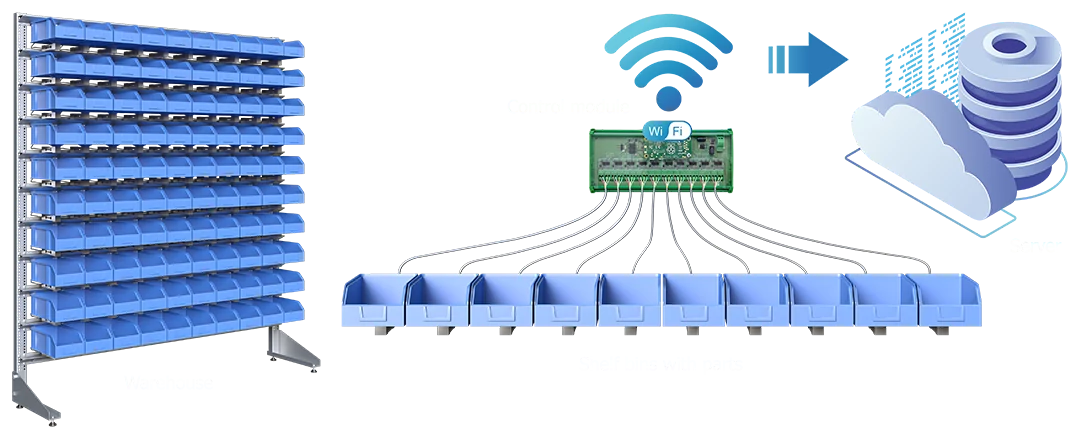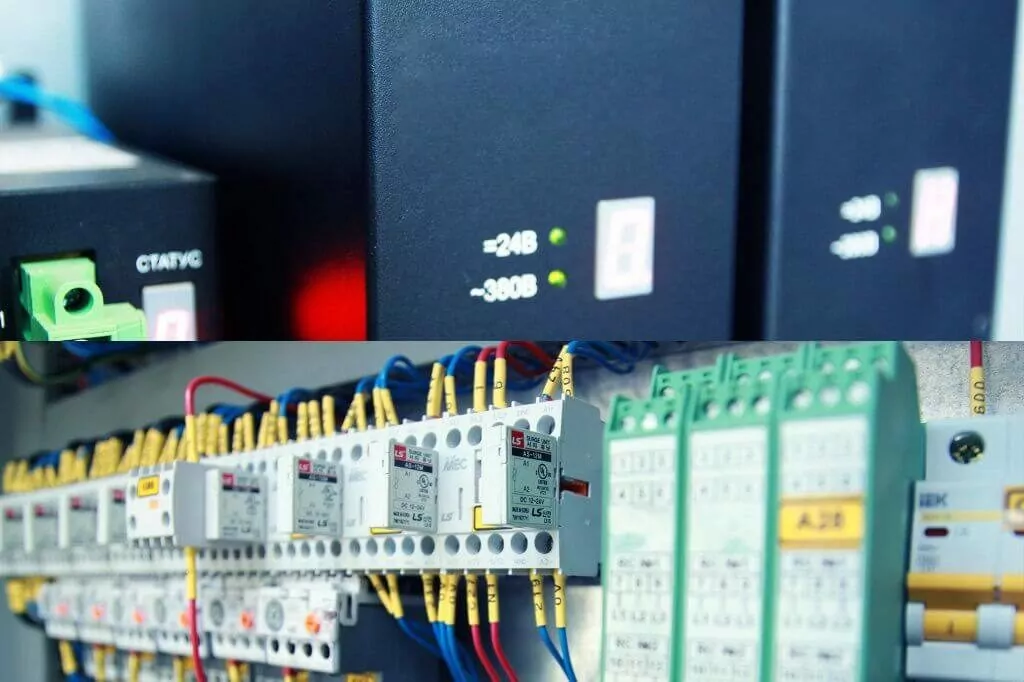Contents
- 1 The Impact of IoT in Manufacturing
- 2 The Era of Smart Manufacturing with IoT
- 3 How can IoT Devices minimize downtime in a manufacturing plant
- 4 The Benefits of industrial IoT and Edge Computing in Manufacturing
- 5 How IoT and Edge Computing Are Changing Manufacturing
- 6 Manufacturing IoT Devices and Sensors
- 7 Exploring IoT Solutions for Manufacturing
- 8 IoT Use Cases in Manufacturing – Real-World Applications
- 9 The Future of IoT and Edge Computing in Manufacturing
- 10 Conclusion
The Impact of IoT in Manufacturing
Welcome to the era of smart manufacturing – where innovation and efficiency go hand in hand, and possibilities are unlimited. The rise of the Internet of Things (IoT) and edge computing is revolutionizing the way manufacturing is done. These technologies are making it possible to collect and analyze data in real time, which is leading to new levels of efficiency, safety, and productivity. This May I was invited as a panel speaker to the Fluke Leadership Conference, a gathering of visionaries whose discussions illuminated the potential of industrial IoT manufacturing solutions and edge computing to shape the future. It was an incredible experience to not only hear predictions from experts on the subject, but also to be a part of the dialogue – sharing my own thoughts and ideas on how these technologies will revolutionize industry practices.
The Era of Smart Manufacturing with IoT
Smart manufacturing, also known as “Industry 4.0” or the “Industrial Internet of Things (IIoT),” is a game-changer for the manufacturing industry. By integrating advanced technologies and data analytics, it takes production to a whole new level of efficiency, productivity, and sustainability.
Imagine a factory where every machine and device is connected, sharing real-time data and insights. This allows for proactive maintenance, minimizing downtime and disruptions. With smart manufacturing, you can keep your operations running smoothly, optimizing every minute of production and maximizing your equipment’s effectiveness.
Image by Freepik
But that’s not all – smart manufacturing IoT is like having a genius at your side, crunching numbers and providing valuable insights. By collecting and analyzing large volumes of data, manufacturers can uncover patterns, trends, and anomalies that would otherwise go unnoticed. This data-driven decision-making empowers you to enhance product quality, reduce waste, and manage resources more efficiently.
Flexibility is key in today’s fast-paced market, and smart manufacturing delivers. With real-time data and connected machines, you can quickly adapt your production to meet changing customer demands. Customize products on the fly, delighting your customers and staying one step ahead of the competition.
Implementing IoT technologies is a smart move. With the Internet of Things, you gain more than just improved production processes – you gain a competitive advantage. Efficient operations, improved quality control, reduced costs, enhanced safety – the benefits are endless. The IoT enables seamless collaboration and connectivity across your entire supply chain, fostering integration and coordination with suppliers and customers alike.
How can IoT Devices minimize downtime in a manufacturing plant
The industrial sector is getting smarter, thanks to the power of the Internet of Things (IoT) in different manufacturing industries. Enabled by connected technologies, smart manufacturing is transforming factories and plants into predictive and responsive machines that harvest and analyze data in real time.
Businesses can now monitor and access detailed process information, allowing them to make informed decisions on the fly and remain ahead of the curve with the latest market trends. Industrial IoT (IIoT) brings automation to labor-intensive manufacturing processes, creating new employment opportunities for tech and engineering professionals and students. The future of the industry looks to be thriving with the help of smart manufacturing and the possibilities of IoT.
Image by ArtPhoto_studio on Freepik
The Benefits of industrial IoT and Edge Computing in Manufacturing
There are many benefits of industrial IoT manufacturing. These include:
Increased efficiency: IoT and edge computing can help to improve efficiency by automating tasks, reducing errors, and improving decision-making.
Improved safety: IoT and edge computing can help to improve safety by identifying potential hazards and taking preventive action.
Increased productivity: IoT and edge computing can help to increase productivity by reducing downtime and improving output.
How IoT and Edge Computing Are Changing Manufacturing
Traditionally, manufacturing was a very manual process. Technicians would manually inspect machines and collect data. This process was labor-intensive, prone to errors, and not very efficient.
The rise of the IoT and edge computing is making it possible to automate much of the monitoring process. This can free up technicians to focus on more complex tasks, such as troubleshooting and repairs.
Industrial IoT devices are being used to collect data from machines in real time. This data can be used to monitor the performance of machines, identify potential problems, and predict when equipment is likely to fail.
Edge computing is a distributed computing paradigm that allows data to be processed closer to the source. This can reduce latency and improve the performance of applications that rely on real-time data.
Manufacturing IoT Devices and Sensors
IoT devices are playing an essential role in the manufacturing industry’s modernization, enabling advances in production processes, efficiency, and safety. Utilizing sensors, RFID tags, cameras, and other connected devices, technology has given factories and production lines the power to operate smarter than ever before. From IoT sensors to connected cameras, the versatile range of IoT devices and sensors available mean that almost any aspect of manufacturing can be tracked, monitored and managed.
Temperature Sensors – Used to sense and monitor temperatures of machinery and the environment. Can be used to prevent overheating and malfunction.
Pressure Sensors – Used to detect, measure, and monitor air or liquid pressure in an enclosed environment. Can help regulate air and liquid flow.
Motion Sensor – Used to detect and track any movement within a predetermined area. Can be used to monitor the movement of production lines.
Environmental Sensors are used to facilitate machine and production line efficiency.
RFID Tags and Smart Labels – Used to quickly and accurately track the location of goods. Can help monitor inventory levels and minimize theft and loss.
Connected Cameras – Used to monitor production lines and measure efficiency, safety, and quality. Can be used in conjunction with software for facial recognition and other types of deep learning.
Image by macrovector on Freepik
Motion Detectors – Used to detect motion in an area or near a machine. Can be used to trigger alarms and help ensure safety.
Audio Sensors – Used to detect and monitor acoustic activity in a production area. They can be used to detect noise levels, vibrations and sound waves.
Exploring IoT Solutions for Manufacturing
IoT solutions are revolutionizing manufacturing processes by enabling connectivity, automation, and data-driven decision making. Compared to general IT solutions for the manufacturing industry, IoT solutions in manufacturing offer distinct advantages.
- Connectivity: IoT solutions seamlessly integrate and connect machines, devices, and systems, enabling real-time data collection and analysis. This improves communication and collaboration across the production line, enhancing efficiency and productivity.
- Automation: IoT enables machines and devices to communicate and coordinate, reducing manual intervention, streamlining workflows, and minimizing errors. This leads to faster and more accurate production cycles.
- Data analytics: IoT solutions provide valuable data from sensors and devices, enabling real-time analysis. This data-driven decision making optimizes processes, improves quality control, predicts maintenance needs, and enhances overall operational efficiency.
- Supply chain management: IoT solutions track and monitor inventory, optimize logistics, and improve supply chain visibility. This results in better inventory management, reduced lead times, and improved customer satisfaction.
For specific industries, consider the following IoT applications:
- Asset tracking and monitoring is beneficial for industries with complex supply chains or large inventories.
- Predictive maintenance is essential for industries reliant on machinery to minimize downtime and maintenance costs.
- Quality control and defect detection enhance product quality in sectors like pharmaceuticals or food processing.
Image by macrovector on Freepik
- Energy management using IoT solutions is advantageous for industries with high energy consumption, promoting cost reduction and sustainable practices.
Overall, IoT solutions in manufacturing offer benefits such as improved efficiency, enhanced quality, reduced downtime, optimized inventory, and better supply chain visibility. By leveraging IoT technology, manufacturers can transform their operations and gain a competitive edge. Let’s consider real use cases in manufacturing
IoT Use Cases in Manufacturing – Real-World Applications
IoT has immense potential in the manufacturing sector, and we are excited to share real-world applications that showcase its power.
Our clients have already harnessed IoT to optimize their processes, enhance efficiency, and drive profitability. With connected devices and intelligent systems, production lines can communicate in real-time, facilitating seamless automation and preventing costly errors.
From predictive maintenance to inventory management, IoT has transformed how manufacturers operate. By leveraging advanced analytics and machine learning, data collected from machinery can generate valuable insights, enabling proactive maintenance to reduce downtime and increase productivity.
Warehouse automation system
Did you ever think about how you could improve your warehouse operations to increase productivity and accuracy? AJProTech faced this challenge and developed a warehouse automation system to streamline processes and optimize efficiency. By integrating technologies such as RFID, barcoding, and wireless communication, the system enabled real-time tracking and monitoring of inventory. It also included automated picking and sorting solutions for faster order fulfillment. The implementation of the warehouse automation system resulted in improved operational efficiency, reduced error rates, and increased customer satisfaction.
Industrial Servo Drivers
What are the challenges faced by the industrial servo drives and how can they be overcome?
The case focuses on the challenges faced by industrial servo drives and the solutions offered by AJProTech, a company specializing in motion control and automation technologies. Industrial servo drives are crucial components of industrial machinery, responsible for accurately controlling the speed and position of motors. However, they often face issues such as high costs, complex installation and programming, and limited compatibility with different systems.
To address these challenges, we offer innovative solutions through the line of industrial servo drives. These drives are designed to be cost-effective, user-friendly, and compatible with various systems, offering seamless integration. Additionally, they provide comprehensive technical support to ensure smooth installation and programming. The company also emphasizes the importance of regular maintenance to ensure optimal performance and extend the lifespan of the servo drives.
The Future of IoT and Edge Computing in Manufacturing
The future of IoT and edge computing in manufacturing is very bright. These technologies are still in their early stages of development, but they have the potential to revolutionize the way manufacturing is done.
In the future, we can expect to see even more widespread adoption of IoT and edge computing in manufacturing. These technologies will become increasingly sophisticated and will be used to solve even more complex problems.
As a result, manufacturing will become more efficient, safer, and productive. This will lead to lower costs, higher quality products, and a stronger competitive advantage for businesses that embrace these technologies.
Conclusion
The rise of the IoT and edge computing is a major trend that is transforming the industrial world. Embrace the future of manufacturing with smart manufacturing and the Internet of Things. Unleash the power of data, connectivity, and automation to revolutionize your operations. Stay ahead of the curve, optimize your processes, and make informed decisions every step of the way.
If you are a business that is involved in manufacturing, you need to be aware of these trends and start planning how to adopt them. Take your manufacturing to the next level with AJProTech’s signature blend of technology and expertise. Together, let’s reshape the future of manufacturing.












